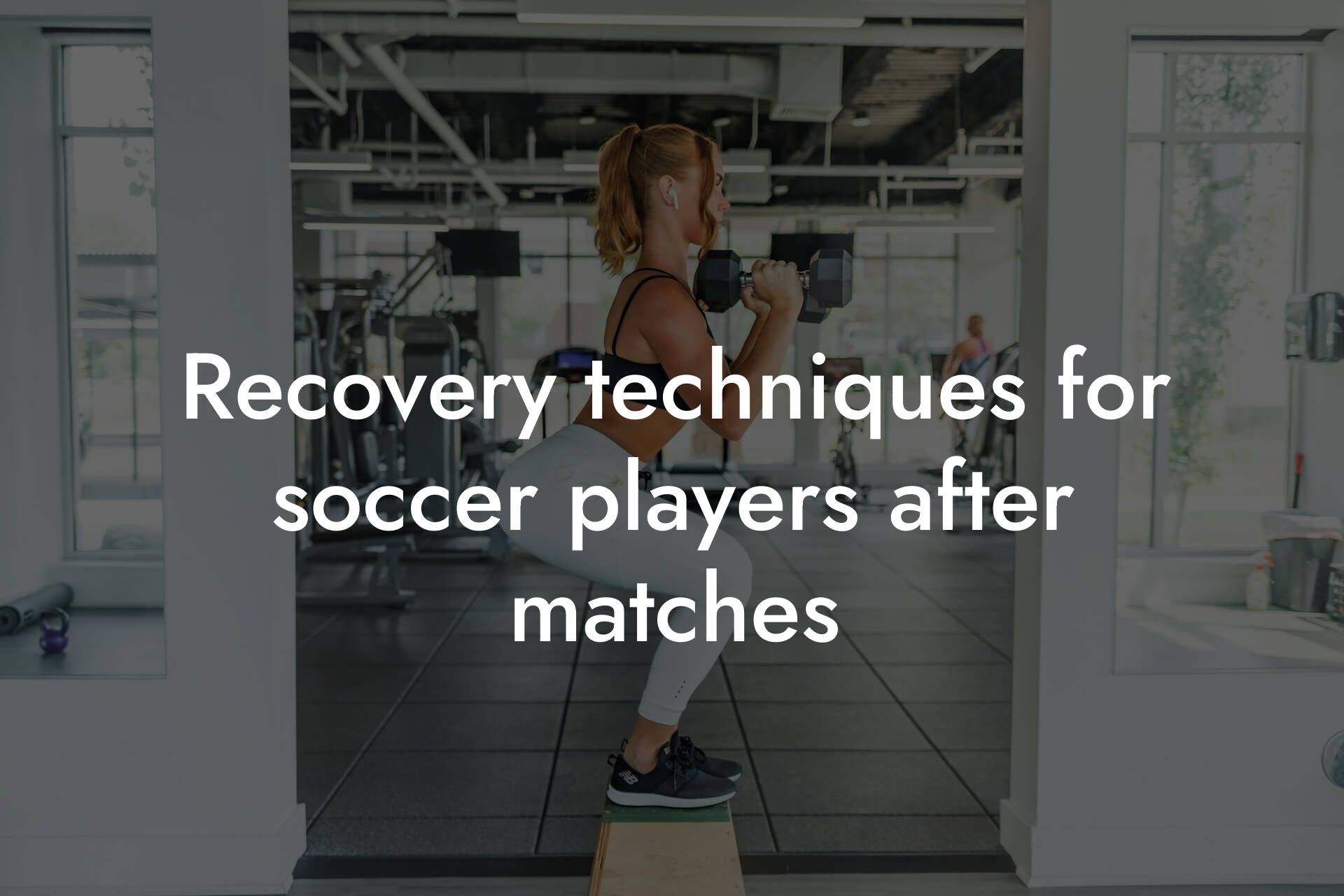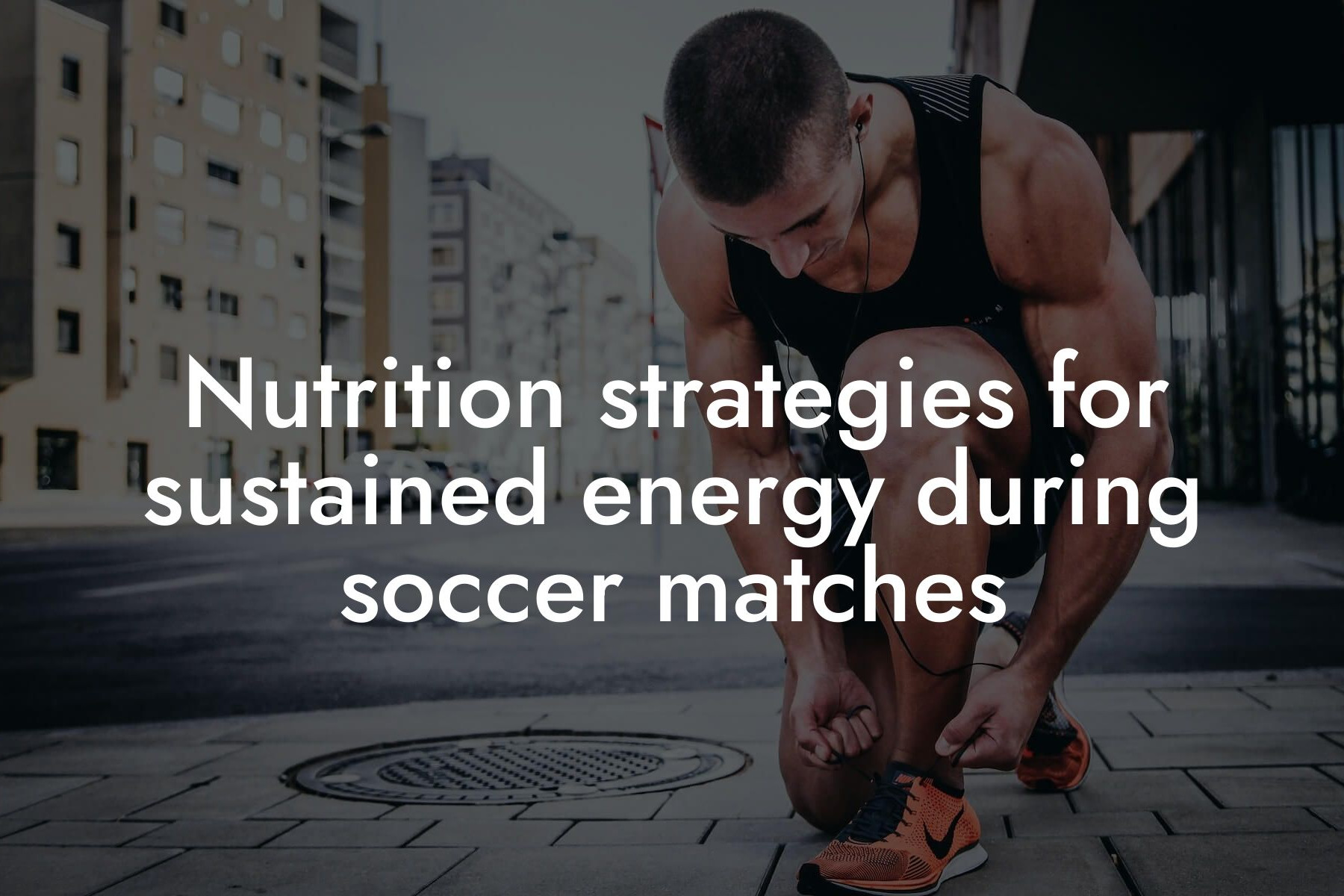As an amateur soccer athlete, you know that the off-season is a critical period for improving your overall fitness, building strength, and enhancing your performance on the field. A well-structured off-season conditioning program can help you gain a competitive edge, reduce the risk of injuries, and prepare you for the demands of the upcoming season. In this article, we'll provide you with a comprehensive guide to off-season conditioning for amateur soccer athletes, covering the essential components, training principles, and exercises to help you achieve your goals.
Table of Contents
- Why Off-Season Conditioning is Crucial for Amateur Soccer Athletes
- Components of an Effective Off-Season Conditioning Program
- Training Principles for Amateur Soccer Athletes
- Sample Off-Season Conditioning Program for Amateur Soccer Athletes
- Incorporating DEXA Scanning into Your Off-Season Conditioning Program
- Frequently Asked Questions
Why Off-Season Conditioning is Crucial for Amateur Soccer Athletes
Amateur soccer athletes often underestimate the importance of off-season conditioning, but it's a crucial period for making significant improvements in their game. During the off-season, you can focus on building your strength, endurance, and agility without the pressure of competition. This allows you to develop a solid foundation, correct any imbalances or weaknesses, and enhance your overall athleticism. A well-planned off-season conditioning program can also help you:
- Improve your speed, agility, and quickness
- Enhance your endurance and stamina
- Increase your strength and power
- Reduce the risk of injuries
- Gain a competitive edge over your opponents
Components of an Effective Off-Season Conditioning Program
A comprehensive off-season conditioning program for amateur soccer athletes should include the following components:
- Strength Training: Building strength in your legs, core, and upper body is essential for improving your power, speed, and endurance.
- Endurance Training: Developing your aerobic endurance through cardio exercises such as running, cycling, or swimming is critical for improving your stamina and reducing fatigue.
- Plyometrics and Agility Training: Incorporating plyometric exercises such as jump squats and box jumps, as well as agility drills like cone drills and ladder drills, can help improve your speed, agility, and quickness.
- Flexibility and Mobility Training: Incorporating stretching and mobility exercises can help improve your range of motion, reduce muscle tension, and enhance your overall athleticism.
- Functional Training: Incorporating functional exercises that mimic soccer-specific movements, such as cutting, turning, and changing direction, can help improve your game-specific skills.
Training Principles for Amateur Soccer Athletes
When designing an off-season conditioning program, it's essential to keep the following training principles in mind:
- Periodization: Divide your off-season into specific training phases, focusing on different components such as strength, endurance, and power.
- Progressive Overload: Gradually increase the intensity and volume of your training over time to continue making progress.
- Specificity: Incorporate exercises and drills that mimic soccer-specific movements and demands.
- Variety: Incorporate a variety of exercises and drills to avoid plateaus and prevent overuse injuries.
- Rest and Recovery: Allow for adequate rest and recovery time to avoid burnout and optimize performance.
Sample Off-Season Conditioning Program for Amateur Soccer Athletes
Here's a sample 12-week off-season conditioning program for amateur soccer athletes:
Weeks 1-4: Strength Training (2-3 times per week)
- Squats (3 sets of 8-12 reps)
- Deadlifts (3 sets of 8-12 reps)
- Lunges (3 sets of 8-12 reps per leg)
- Leg Press (3 sets of 10-15 reps)
- Core Exercises (3 sets of 10-15 reps)
Weeks 5-8: Endurance Training (2-3 times per week)
- Running or Cycling (30-45 minutes at moderate intensity)
- High-Intensity Interval Training (HIIT) (20-30 minutes)
Weeks 9-12: Plyometrics, Agility, and Functional Training (2-3 times per week)
- Plyometric Exercises (3 sets of 10-15 reps)
- Agility Drills (3 sets of 10-15 reps)
- Functional Exercises (3 sets of 10-15 reps)
Incorporating DEXA Scanning into Your Off-Season Conditioning Program
At Tano Performance Group, we understand the importance of tracking progress and making data-driven decisions. That's why we recommend incorporating DEXA scanning into your off-season conditioning program. DEXA scanning provides a comprehensive body assessment, including body fat percentage, lean mass, bone density, and more. This information can help you:
- Track changes in body composition
- Optimize your nutrition and training program
- Identify areas for improvement
- Make data-driven decisions to enhance your performance
In conclusion, a well-structured off-season conditioning program is essential for amateur soccer athletes looking to improve their performance, reduce the risk of injuries, and gain a competitive edge. By incorporating the essential components, training principles, and exercises outlined in this article, you can take your game to the next level. Remember to track your progress, make data-driven decisions, and incorporate DEXA scanning into your program to optimize your results. With dedication and hard work, you can achieve your goals and dominate the soccer field.
At Tano Performance Group, we're committed to helping high-earning professionals like you achieve their physical goals and enhance their performance. Contact us today to learn more about our DEXA scanning services and how we can help you take your game to the next level.
Frequently Asked Questions
What is off-season conditioning, and why is it important for amateur soccer athletes?
Off-season conditioning refers to the training and preparation an athlete undergoes during the period between competitive seasons. It's essential for amateur soccer athletes to prioritize off-season conditioning to maintain and improve their physical fitness, technical skills, and overall performance. This dedicated time allows athletes to address weaknesses, recover from injuries, and build a strong foundation for the upcoming season.
How does off-season conditioning differ from in-season training?
Off-season conditioning focuses on building a strong foundation of strength, endurance, and flexibility, whereas in-season training is more focused on maintaining and fine-tuning performance. During the off-season, athletes can dedicate more time to building their overall fitness, whereas in-season, the priority is on recovery and performance.
What are the key components of an effective off-season conditioning program for amateur soccer athletes?
A well-structured off-season conditioning program should include a combination of strength training, cardiovascular exercise, plyometrics, agility drills, and technical skill development. A balanced program will also prioritize recovery, nutrition, and mental preparation.
How long should an off-season conditioning program last?
The duration of an off-season conditioning program can vary depending on the individual athlete's needs and goals. Typically, a program can last anywhere from 8-16 weeks, with a gradual progression from general preparation to specific soccer-related training.
What are the benefits of incorporating strength training into an off-season conditioning program?
Strength training is essential for amateur soccer athletes to improve their power, speed, and endurance. It can also help reduce the risk of injury, enhance overall athleticism, and increase confidence on the field.
What types of exercises should amateur soccer athletes focus on during strength training?
A well-rounded strength training program for amateur soccer athletes should include exercises that target the legs, core, and upper body, such as squats, lunges, deadlifts, bench press, and rows. Additionally, exercises that mimic soccer-specific movements, such as step-ups and box jumps, can be beneficial.
How often should amateur soccer athletes engage in cardiovascular exercise during the off-season?
Aim to incorporate cardiovascular exercise 2-3 times per week, with a minimum of 20-30 minutes per session. This can include activities such as jogging, cycling, or swimming, as well as high-intensity interval training (HIIT).
What is the importance of plyometrics and agility drills in an off-season conditioning program?
Plyometrics and agility drills are essential for improving speed, power, and quickness on the field. These exercises, such as jump squats and shuttle runs, can help amateur soccer athletes develop the explosive movements needed to excel in the sport.
How can amateur soccer athletes incorporate technical skill development into their off-season conditioning program?
Technical skill development can be achieved through individual or small-group training sessions, focusing on ball control, dribbling, passing, and shooting. Athletes can also work on their weaknesses, such as their non-dominant foot or aerial ability.
What role does nutrition play in an off-season conditioning program?
Nutrition is a critical component of an off-season conditioning program, as it provides the necessary fuel for training and recovery. Amateur soccer athletes should focus on consuming a balanced diet that includes lean protein, complex carbohydrates, and healthy fats, as well as staying hydrated by drinking plenty of water.
How can amateur soccer athletes prioritize recovery during the off-season?
Recovery is essential during the off-season to allow the body to adapt to the demands of training. Athletes can prioritize recovery by getting adequate sleep, stretching and foam rolling, and incorporating low-intensity activities such as yoga or walking.
What is the importance of mental preparation during the off-season?
Mental preparation is crucial during the off-season to build confidence, focus, and resilience. Amateur soccer athletes can work on their mental game through visualization exercises, positive self-talk, and setting realistic goals.
How can amateur soccer athletes stay motivated during the off-season?
Staying motivated during the off-season can be challenging, but setting specific, measurable, and achievable goals can help. Additionally, finding a training partner or joining a training group can provide accountability and support.
What are some common mistakes amateur soccer athletes make during the off-season?
Common mistakes include not allowing for adequate recovery time, neglecting strength training, and failing to set realistic goals. Amateur soccer athletes should also avoid overtraining, which can lead to burnout and injury.
How can amateur soccer athletes measure their progress during the off-season?
Progress can be measured through a variety of methods, including fitness testing, such as the beep test or pro agility shuttle, as well as tracking training data, such as distance covered or heart rate. Athletes can also monitor their body composition and overall well-being.
What are the benefits of working with a qualified coach or trainer during the off-season?
Working with a qualified coach or trainer can provide amateur soccer athletes with personalized guidance, correct technique, and a tailored training program. This can help athletes achieve their goals more efficiently and effectively.
How can amateur soccer athletes balance their off-season conditioning program with other responsibilities, such as work or school?
Time management is key when balancing multiple responsibilities. Amateur soccer athletes should prioritize their training schedule, set realistic goals, and make adjustments as needed to ensure they can meet their commitments.
What are some effective ways to stay hydrated during the off-season?
Staying hydrated is crucial during the off-season. Amateur soccer athletes should aim to drink at least 8-10 glasses of water per day, and make sure to drink water before, during, and after training sessions.
How can amateur soccer athletes incorporate flexibility and mobility exercises into their off-season conditioning program?
Incorporating flexibility and mobility exercises, such as stretching and foam rolling, can help improve range of motion, reduce injury risk, and enhance overall performance. Athletes should aim to dedicate 10-15 minutes per day to flexibility and mobility exercises.
What are some common injuries amateur soccer athletes may experience during the off-season, and how can they be prevented?
Common injuries during the off-season include shin splints, groin strains, and hamstring pulls. These can be prevented by incorporating proper warm-ups and cool-downs, wearing supportive gear, and gradually increasing training intensity and volume.
How can amateur soccer athletes make the most of their off-season conditioning program?
To make the most of their off-season conditioning program, amateur soccer athletes should set realistic goals, stay consistent, and be patient. They should also focus on building a strong foundation, addressing weaknesses, and developing a well-rounded fitness program.
Here are some related articles you might love...
- Recovery techniques for soccer players after matches
- Bone density and injury prevention for soccer players
- Nutrition strategies for sustained energy during soccer matches
- Using DEXA scans to monitor soccer player progress
- Strength training programs for amateur soccer players
- The impact of body composition on soccer performance
- Reducing body fat to enhance agility and speed in soccer
- Hydration and nutrition tips for weekend soccer warriors
Zak Faulkner
Zak Faulkner is a leading authority in the realm of physical health and body composition analysis, with over 15 years of experience helping professionals optimise their fitness and well-being. As one the experts behind Tano Performance Group, Zak has dedicated his career to providing in-depth, science-backed insights that empower clients to elevate their physical performance and overall health.
With extensive knowledge of DEXA technology, Zak specializes in delivering comprehensive body assessments that offer precise data on body fat, muscle mass, bone density, and overall physique. His expertise enables individuals to make informed decisions and achieve their fitness goals with accuracy and confidence. Zak’s approach is rooted in a deep understanding of human physiology, combined with a passion for helping clients unlock their full potential through personalised strategies.
Over the years, Zak has earned a reputation for his commitment to excellence, precision, and client-focused service. His guidance is trusted by top professionals who demand the best when it comes to their health. Whether advising on fitness programs, nutritional strategies, or long-term wellness plans, Zak Faulkner’s insights are a valuable resource for anyone serious about taking their health and fitness to the next level.
At Tano Performance Group, Zak continues to lead our Content Team revolutionising how professionals approach their physical health, offering unparalleled expertise that drives real results.




